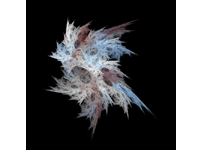
|
Cococubed.com
|
| Chapman-Jouget Detonations |
Home
Astronomy Research
2025 Neutrinos From De-excitation
Radiative Opacity
2024 Neutrino Emission from Stars
2023 White Dwarfs & 12C(α,γ)16O
2023 MESA VI
2022 Earendel, A Highly Magnified Star
2022 Black Hole Mass Spectrum
2021 Skye Equation of State
2021 White Dwarf Pulsations & 22Ne
Software Instruments
Stellar equation of states
EOS with ionization
EOS for supernovae
Chemical potentials
Stellar atmospheres
Voigt Function
Jeans escape
Polytropic stars
Cold white dwarfs
Adiabatic white dwarfs
Cold neutron stars
Stellar opacities
Neutrino energy loss rates
Ephemeris routines
Fermi-Dirac functions
Polyhedra volume
Plane - cube intersection
Coating an ellipsoid
Nuclear reaction networks
Nuclear statistical equilibrium
Laminar deflagrations
CJ detonations
ZND detonations
Fitting to conic sections
Unusual linear algebra
Derivatives on uneven grids
Pentadiagonal solver
Quadratics, Cubics, Quartics
Supernova light curves
Exact Riemann solutions
1D PPM hydrodynamics
Hydrodynamic test cases
Galactic chemical evolution
Universal two-body problem
Circular and elliptical 3 body
The pendulum
Phyllotaxis
MESA
MESA-Web
FLASH
Zingale's software
Brown's dStar
GR1D code
Iliadis' STARLIB database
Herwig's NuGRID
Meyer's NetNuc
AAS Journals
2025 AAS YouTube
2025 Listing of 500+ Author Videos
2025 AAS Peer Review Workshops
2025 ASU Energy in Everyday Life
2025 MESA Classroom
Other Stuff:
Bicycle Adventures
Illustrations
Presentations
Contact: F.X.Timmes
my one page vitae,
full vitae,
research statement, and
teaching statement.
Given (i) a fuel's temperature, density and composition and (ii) that the fuel's ashes are in their equilibrium state (e.g., NSE in the nuclear case), then the Chapman-Jouget (CJ; 1890) detonation solution follows from solving the the mass and momentum equation (which defines the "Rayleigh line" ; see illustration below) $$ (P_2 - P_1) - (v_2 \rho_2)^2 \cdot (v_1 - v_2) = 0 \label{rayleigh} \tag{1} $$ together with the energy equation (which defines the "Hugoniot curve"; see illustration) $$ E_1 + q_{\rm nuc} - E_2 + \dfrac{1}{2} (P_1 + P_2) (v_1 - v_2) = 0 \label{hugoniot} \tag{2} $$ where $P$ is the pressure, $\rho$ is the density, $v$ is the material speed, $E$ is the specific internal energy, and $q_{\rm nuc}$ is the energy released by burning in going from the unshocked upstream material (subscript 1) to the final post-shock downstream material (subscript 2). These two algebraic equations are to be solved simultaneously with the two algebraic equations for the postshock NSE composition. This is a four-dimensional root find, but it can be done efficiently as two nested two-dimensional root finds.
The CJ solution tells you the (i) speed of the detonation and (ii) the thermodynamics of the ashes. The CJ solution doesn't tell you the (a) the width of the fuel-to-ash region, (b) the spatial variations of the variables, or (c) if the solution is a self-sustaining detonation.
The tool in cjdet.tar.xz generates CJ solutions using the helmholtz equation of state and relevant parts of the torch network. It will also compute the strong and weak solutions if one chooses to drive the system at a user-specified Mach number. If one wants what a Chapman-Jouget solution doesn't tell you, a ZND detonation might.

detonation speed is non-monotonic with density |

why the detonation speed is non-monotonic |

|